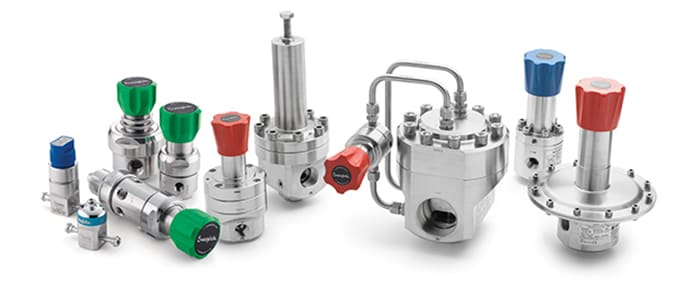Common Water Pressure Regulator Problems and Troubleshooting
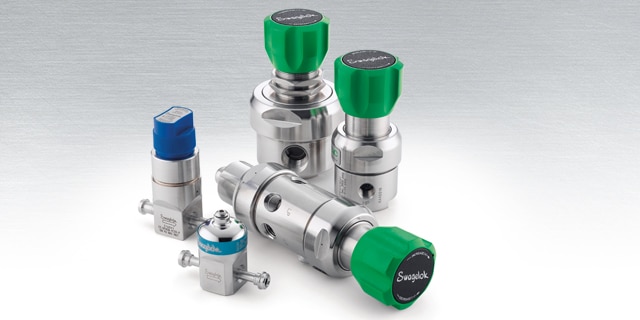
How to Troubleshoot Common Regulator Problems
Industrial fluid system processes rely on precise fluid temperature, flow, and pressure settings to operate as intended. Many key components, including pressure regulators (or pressure-reducing valves), are critical in maintaining your necessary process conditions.
So, what happens when a pressure regulator fails or malfunctions?
Pressure regulators are designed to control system pressure while accounting for changes in system parameters. You will likely see either a drop or increase in pressure downstream, and each of these instances can compromise the quality and safety of your process. Your ability to identify the cause of unexpected pressure changes is helpful in rectifying the issue before it becomes a bigger problem.
Though there are many factors throughout an industrial fluid system that may contribute to pressure variations, there are a few common issues you may be able to identify and resolve. In this blog, we will walk through a simple three-step process you can use to troubleshoot issues you may be experiencing with your regulators to help reduce regulator failure.

Your first step in troubleshooting is to examine your process requirements, including system flow, system pressure, system temperature, process sensitivity, and system media — all of which are important to deciding if you have the correct type of regulator installed. In its simplest terms, if you need to control pressure from a source before it arrives at the main process, then you need a pressure-reducing regulator. If you need to control pressure from upstream, then you need a back-pressure regulator.
The application of the wrong type of regulator is a common mistake that can compromise your process. If you are unsure, you can work with your regulator supplier to identify the appropriate type of regulator for your process. If you have found that you do have the correct type of regulator installed, move on to Step 2.

Next, identify the nature of your issue. Is pressure rising beyond your set pressure upstream? Or is it dropping below your set pressure downstream?
Is pressure dropping below target pressure?
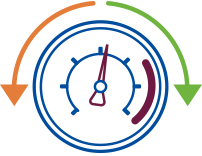
Is pressure rising beyond target pressure?
If pressure is rising beyond your set pressure, this condition is most commonly attributable to one of two issues. The first is a phenomenon called creep, which can occur just after the first commissioning of a regulator when installation debris is flowed through the system. The contaminants create a fine gap between the regulator’s seat and poppet, which can unintentionally allow system media to flow across the seat, resulting in unwanted pressure increases downstream. Creep can be problematic and dangerous if your downstream components are not rated for the pressures that are creeping across the seat. Fortunately, it can be avoided with careful installation, upstream filtration, and the purchase of a spares kit with new regulators.
The second likely potential cause of unwanted pressure increases is the supply pressure effect (SPE), where a change in outlet pressure occurs due to a change in the inlet (or supply) pressure. When the inlet pressure drops, the outlet pressure can increase beyond your desired requirements. If you have identified that SPE might be impacting your set pressures, move on to Step 3.
If pressure is dropping beyond your set pressure, the most common cause is that your regulator is undersized for your application’s flow requirements. For example, if the regulator set pressure is at 70 psi, and flow increases without anything being done to the regulator to compensate, it is likely that pressure will drop below your 70-psi target. This kind of pressure drop is also known as droop. Our flow curve generator tool may be able to help you determine if your regulator is appropriately sized for your application. If you have determined that this is what is causing your issues, move on to Step 3.
If these common issues do not appear to be the source of your regulator issues, a more complex issue may be at play. If your regulator supplier is knowledgeable about additional areas of fluid system operation, they may be able to help you perform a more robust evaluation to identify any issues.

In the case of SPE, some regulator options can mitigate this phenomenon’s effects better than others. For example, a regulator that incorporates a balanced poppet design can help minimize the area on which the inlet pressure can have an effect. Additionally, a two-stage pressure-reduction scheme can minimize supply pressure effect in most applications. This method involves installing two single-stage regulators in a series or combining the regulators into a single assembly.
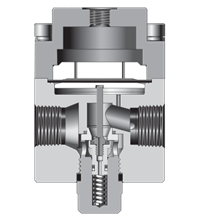
The above issues are just a few of the most common causes of poor regulator performance, but there may be additional factors unique to your application that can adversely influence outcomes as well. Your regulator supplier should be able to help guide you toward making the right selection suited for your application’s needs. If you are interested in discussing any new regulator applications or existing issues you are experiencing with your pressure regulators, our specialists can help you achieve optimized regulator and fluid system performance.
Related Articles
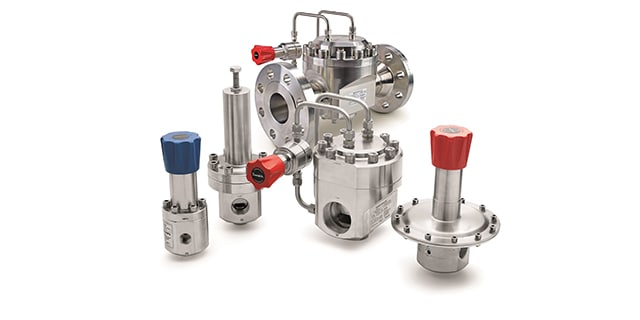
How to Flatten a Regulator Flow Curve to Reduce Droop
Droop is an issue for every pressure-reducing regulator. Learn how to minimize droop and flatten regulator flow curves with various dome loaded regulator configurations explained by Jon Kestner.
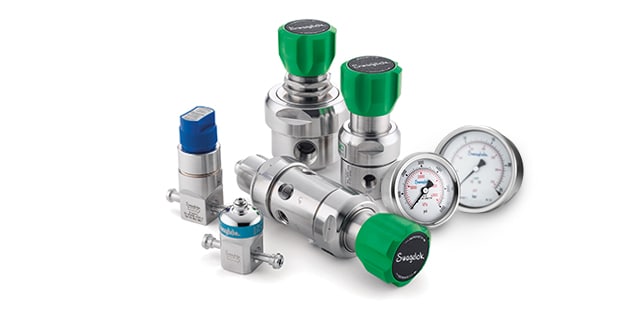
Back-Pressure Regulator Set-Up: Tips for Sampling System Engineers
Back-pressure regulators can effectively control upstream pressure within a sampling system process line—when set up correctly. Learn how to accurately design and build a process line with a back-pressure regulator.
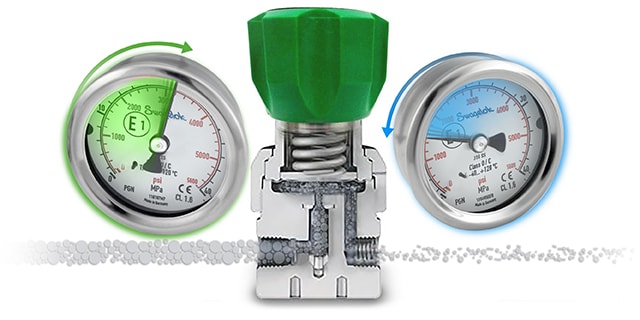
Managing Supply Pressure Effect (SPE) in a Regulator
Supply pressure effect, also known as dependency, is an inverse relationship between inlet and outlet pressure variables within a regulator. Learn how to manage this phenomenon in your pressure regulators with tips from Swagelok.



